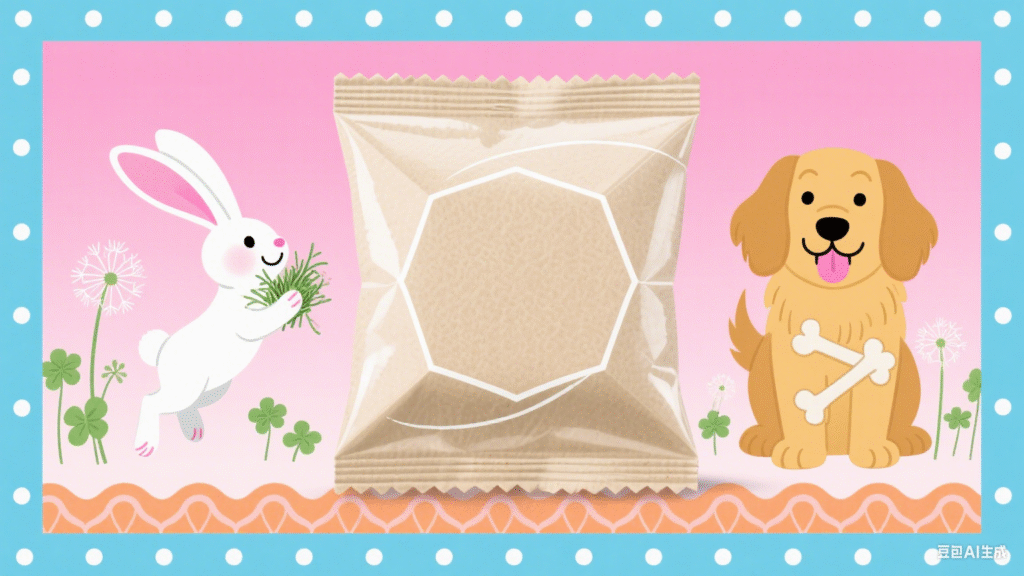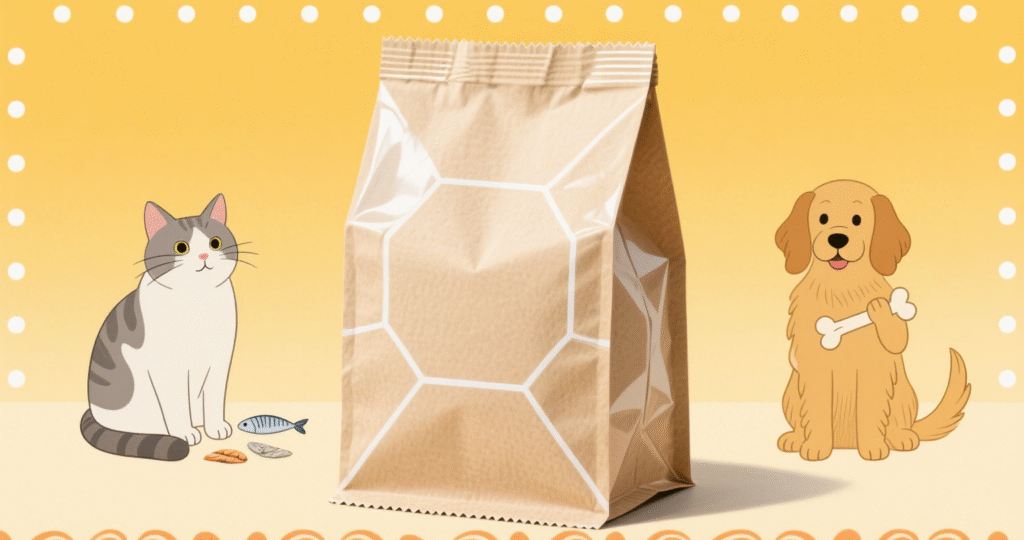Pet Food Packaging Bags
Plastic Materials
1. Polyethylene (PE)
This is the most common plastic material used in pet food packaging bags. It is cost-effective, has good flexibility and water resistance, and can withstand moisture-related damage to food. Ordinary PE bags are often used for budget-friendly dry pet food packaging, ensuring basic moisture protection while reducing overall costs. However, its gas barrier properties are relatively weak, and when used alone, it struggles to maintain food freshness over extended periods.
2. Polypropylene (PP)
PP material has high transparency, good mechanical strength, and excellent heat resistance, capable of withstanding certain high-temperature environments. It is widely used in pet snack packaging bags, such as transparent stand-up pouches for pet meat jerky, which leverage PP's high transparency to allow consumers to visually inspect the product and encourage purchases. Additionally, it has good chemical stability and does not easily react chemically with food.
3. Polyethylene terephthalate (PET)
PET material is rigid, highly transparent, and has excellent barrier properties against oxygen and moisture. It is commonly used in pet food packaging to extend shelf life, prevent fat oxidation, and retain flavor. For example, some imported pet foods use PET composite film packaging to ensure product quality remains intact during long-distance transportation and extended storage.

Paper-based materials
1. Kraft paper
As a traditional packaging paper, kraft paper is renowned for its strength and durability, while also offering breathability and moisture resistance. It aligns with current green consumption trends and is commonly used for outer packaging boxes for pet food, or combined with plastic or aluminum foil to enhance overall packaging performance.
2. White cardstock
White cardstock is rigid and has a smooth surface, making it ideal for color printing to produce beautiful patterns and text. It is commonly used for individual packaging of small pet snacks, where its elegant printing design enhances product appeal and brand recognition.
Pet dry food packaging bags
Composite materials
1. Aluminum-plastic composite film
This material combines the advantages of aluminum foil and plastic. Aluminum foil has excellent barrier properties, completely blocking light, oxygen, and moisture; plastic provides flexibility and good heat sealability. Aluminum-plastic composite film is widely used in various pet food packaging, whether for dry food, wet food, or snacks, extending the shelf life of the food and ensuring its freshness and quality.

2. Paper-plastic composite material
This material integrates the environmental friendliness of paper with the moisture-proof and waterproof properties of plastic. It can be used in large pet food bags, similar to kraft paper and plastic composites, or in small, elegant packaging for pet snacks, made from white cardstock and plastic composites. It meets packaging functional requirements while also considering environmental friendliness and aesthetics.
Different materials for pet food packaging bags have their own advantages and disadvantages. In practical applications, it is necessary to comprehensively consider factors such as food characteristics, shelf life, cost budget, and environmental requirements to make an appropriate choice, ensuring safe and fresh food for pets.
Wanle Package specializes in producing various high-quality pet food packaging bags. Contact us now to enjoy excellent service and customized solutions!
